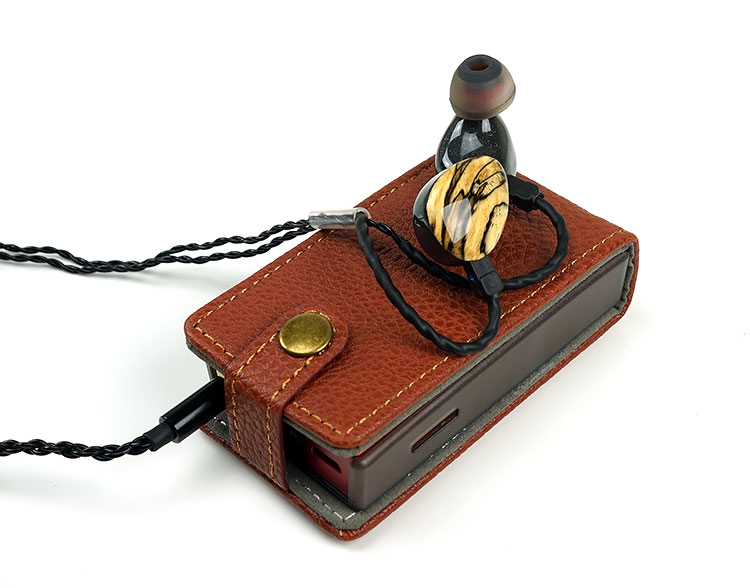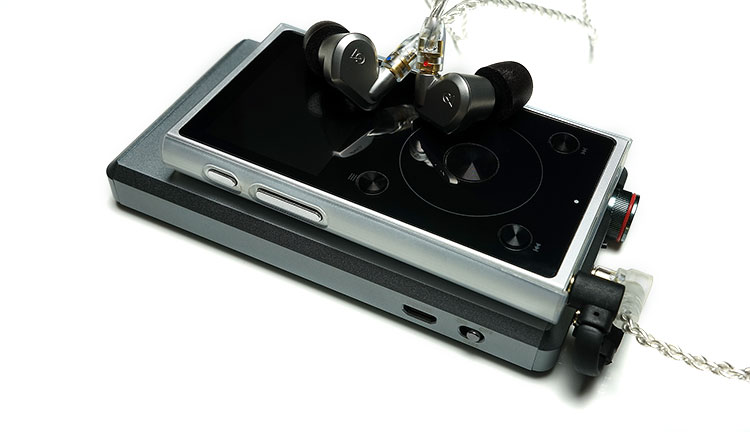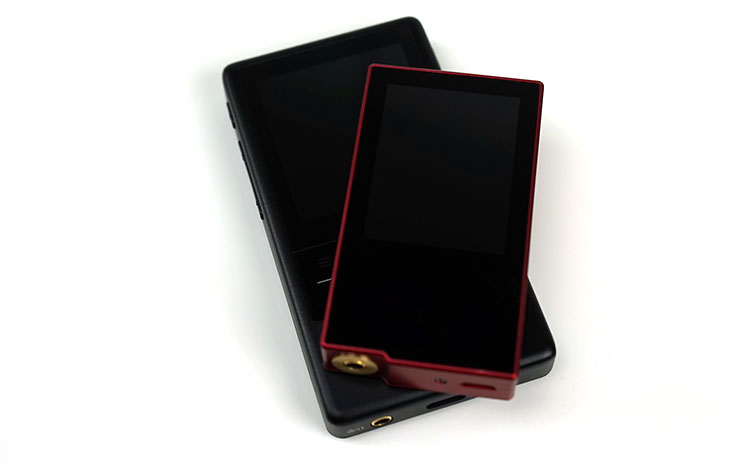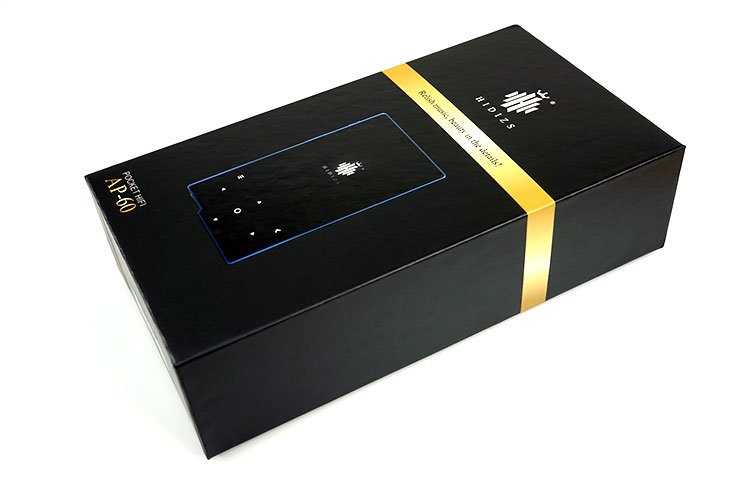Sound Impressions
Tonality & Presentation
The AP60 has a warm full bodied sounding tonality with more of a musical emphasis that is in keeping with its AK Dac chip qualities but not quite as resolving and expansive sounding as the higher end AK4490EQ chipsets DAPs.
Staging is more depth than width and height with a relaxed top-end presentation starting from the upper mids and a vocal presence that’s more neutral to slightly behind its boosted and more impactful low end. There is enough bass-treble contrast though for the AP60 to sound relatively distinct and detailed enough not to come across as overly syrupy or dark sounding.
Bass
The AP60’s calling card though is its full sounding and impactful low end. To be more precise this is a boosted mid-bass impactful and musical tuning rather than something with low-end power and a steady linear drop to the mids. Instrumental clarity on the AP60 is not quite as clean and clear as the N3 in that respect with the mid-bass impact slightly overshadowing any nuanced detail in the lower mids.
There is some sub-bass reach but it is a little polite and lacking in definition suggesting a slight roll-off below 100Hz taking a little edge of the AP60’s ability to generate low-end power despite its energetic and more aggressive mid-bass response.
Mids
Mids on the AP60 are smooth sounding but lack a little in micro-detail with instrumental layering and separation a little tight but not overly compressed. Imaging is a little center focused more than I would like though vocals are reasonably clear with enough space to breathe despite their relative neutral positioning.
Instrumental timbre is to the warm and slightly euphoric side with decent note thickness though that lower level of detail and dynamics can overly soften guitar attacks where I would more bite and clarity.
Treble
Treble on the AP60 is more laid back and relaxed than anything but thankfully it is not overly soft sounding or syrupy. There is a slight uptick in energy in the final octave so it doesn’t sound overly dark or shelved down but it lacks a little in clarity and nuanced articulation.
This is a top end response that is more on the forgiving than accurate and how well it plays out will depend on the type of IEM you match it with. It actually sounded pretty ok with the super fussy RHA CL1 and CL750 for instance but not so great with the Oreveti Basic.
Matchability
Efficiency
Noisy
On paper, the AP60 should be an ideal match up with IEMs given its 35w into 32-ohm rating being that much weaker than some of the competing DAPs. However, in reality, the noise floor is a touch too high for super sensitive IEMs, particularly BA designs hitting low ohm ratings and higher sensitivity ratings of around 115dB upwards. IEMs such as the Campfire Audio BA range including the Orion and Andromeda were simply exhibiting way too much hiss even on low gain level to be considered an ideal match.
Quiet
Not all BA designs will show up distracting noise, however, such as the case with the Brainwavz B200 with its 32 ohm and 110dB rating and the Ortofon EQ7 rated at 31 ohms and 117dB. Noise levels on both of these IEMs were quite good actually. Higher impedance IEMs such as the 150 ohms RHA CL1 needed a much higher voltage level in high gain to get acceptable levels of audible signal but once again the noise levels were excellent.
Good quality earbuds like the Astrotec Lyra 6 at 32 ohms and 108dB were also dead silent with the AP60 using its low gain setting. Budget dynamic IEMs with middling efficiency also performed very well. Advanced’s $50 M4, rated at 16 ohms and 92dB also has a very quiet background with zero noise and hiss.
Power
Easy to drive headphones is the name of the game when pairing with the AP60 and surprisingly some headphones I did not expect to do well actually sounded ok with the AP60. Efficient planars such as the Hifiman Edition X V2 had more than decent voltage levels on low gain to sound ok, though naturally, it won’t be the ideal pairing given the paucity of detail in the AP60 performance compared to mid-fi DAPs. Musical as it may be, the AP60 will lack the dynamics required to really sound optimal with this pairing.
Easy to drive dynamic headphones such as the new Meze 99 Neo also sounded fun and musical with the AP60 and again no issues whatsoever with voltage levels as well as having better dynamics than the slightly more revealing Edition X. Once again though details levels are just a little lacking but it is a forgiving pairing and very nice indeed for casual listening.
I had no issues with voltage levels also on Mitchell & Johnson’s M2J Electret headphone though tonally it lost a level of treble clarity that makes the M2J so potent. Instead, I was left with a relatively non-descript mid-centric tonal presentation that didn’t do justice to either source or headphone.
As A Transport
Given the features of the AP60, including OTG, you can actually pair it up with a quality DAC/Amp and use it as a transport, which I think the value add may well be if you are using a fairly compact DAC/amp. Just simply plug in, wait for the pop-up “audio device connected” message on the AP60 and then hit play.
The tiny form factor makes it an ideal stacking partner for the likes of the Chord Mojo and the Cypher Labs Picollo DAC/Amp which will not only offer a higher level of detail but balance out the tonal presentation a little more as well as provide much better output power for headphones and less hiss for sensitive IEMs.
I will say though that not all DAC/Amps will have equal performance levels. The Mojo’s voltage level control and level of clarity were much superior to the RAH Dacamp L1 which seems to run too quiet even in high gain mode with a reasonable set of 32-ohm headphones.
For $89.99 it probably one of the cheapest features packed audio “transports” that I know off, just grab two rubber bands and an OTG cable and try it out.
Select Comparisons
FiiO X1 2nd Gen
$99
Specs
The processor of the X1 2nd Gen is the older Ingenics JZ4760B and the move from its older SOC coding to a newer Linux platform really pulls down the speed and response time of the X1 2nd Gen. It was a bold move but a faster processor chip is needed to execute the vision. The AP60 feels snappier, has a more powerful newer Ingenics chip in it and sticks to the older SOC platform which uses less memory and thus much easier to work with.
Controls
Both DAPs have a non-touch interface and here is where the X1 2nd Gen is superior to the AP60 with its touch wheel interface and the inclusion of physical playback controls that are not screen active dependent like the AP60. In a way, the large size of the X1 2nd Gen does help space out the buttons better and the wheel’s touch responsive mechanism is much more user-friendly. The X1 though is a touch slower in execution of its physical controls compared to the capacitive solution of the AP60.
No AptX
The ironic thing is the switch to Linux means the X1 BT is not aptX capable whereas the AP60 staying on the older SOC is able to offer aptX compatibility. Both can offer duplex BT by the way which is a great feature but the quality of audio signal will be better on the AP60 if the wireless source can transmit or receive aptX BT.
Power & Noise
The X1 has a rated ≥ 70 mW (@32 Ω) compared to the AP60’s 35mW@32 ohm. In short, the output power is roughly double that of the AP60 and it has a lower noise floor than the AP60 with sensitive IEMs though both DAPs have a higher noise floor than the Cayin N3.
Tonality
Tonally the X1 2nd Gen is a bit more neutral sounding than the AP60 which has a warmer tonality and fuller low end. The AP60 has more of a mid-bass emphasis whereas the X1 2nd Gen sub-bass has a bit more definition and power. Mids on the X1 are also a bit cleaner with slightly better instrumental separation than the AP60 though not by a huge amount.
Vocals on the X1 benefit from the slightly superior resolving power so they have a cleaner edge and more detail compared to the smooth but slightly less dynamic AP60 presentation. Both have a relatively laid-back and inoffensive treble presentation, however, the X1 has a touch more headroom and air and a little bit more resolving.
If you want something with a fuller low end, more OS features and a snappier processor than the AP60 can deliver but if you need a bit more detail and headroom in your tonal presentation then the X1 is a more balanced option.
Cayin N3
$149.99
Specs
The AP60 packs the same Ingenics X1000 SOC processor as the N3 and also uses the same custom designed SOC software as the N3. The theme and aesthetics of the OS might be different but the workflow and options are much the same on both DAPs. This means the AP60 is equally speedy and stable and can scan the same 2400 tracks in almost the exact same time as the N3 in side by side testing with same microSD cards. That is impressive.
Decoding
Like the N3 the AP60 also supports duplex BT with bi-directional transmission as well as offering Bt 4.0 aptX out and receive aptX 4.0 in. The AK4452vn DAC chip is also an AKM chip though slightly lower in the chip family than the AK4490EN with a maximum decoding output rate of 24BIT/192K.
Like the N3 it can work USB-DAC as well as OTG via micro-USB and can accommodate 256GB memory cards. Battery performance on both the N3 and AP60 is similar at 10-12 hours though the AP60 has a much smaller 1000mAh battery in its tiny body
Power & Noise
The AP60’s Achilles’s heel compared to the N3 is its output power. On paper, Hidizs have rated the AP60 at 35mW@32 ohm which means it’s got about 1/4 of the output power at 32 ohms loaded compared to the N3.
Dynamic range is also a little lower than the N3 though SNR is similar at 109dB but Hidizs does not state if this is a loaded or unloaded rating. Cayin’s ratings are all measured as loaded on 32 ohms. The AP60 seems to be more suited as an IEM DAP with those numbers and yet it exhibits more noise than the N3 on efficient IEMs making the N3 the better choice for IEMs.
Tonality
The N3 contextually is more balanced, resolving and open sounding in comparison. The AP60 has as more pronounced and warmed low-end compared to the linear sounding N3 however it lacks a bit of definition and puts the rest of the spectrum somewhat behind in terms of presence.
Mids lack detail in comparison, sounding smoothed over compared to the better layering and instrumental separation of the N3. Vocals are clearer, better defined with more detail on the N3. Treble is also pretty far back and that is probably more to do with the boosted warm mid-bass performance than any inherent laid back treble signature.
If you can dial back the bass boost and EQ the treble a little you have a fairly pleasant and forgiving signature that for $80 is more about the sum of the parts and what it can do than tonal strengths. It sort of reminds me of the FiiO M3 only more resolving.
Our Verdict
It is always nice to see a sub $100 DAP hit the market and provide an affordable entry level option to those looking for their first DAP or a first-time upgrade and by and large, in terms of features I think Hidizs have done wonders with the AP60.
Lots of Features
For less than a ton you get a bi-directional aptX BT, DSD decoding, OTG and USB-DAC all in the size of a matchbox with a competitive and accurate battery life cycle and some really attractive optional accessories for a few bucks more. It is genuinely portable, easily stackable and fairly attractive in its myriad of color schemes. The OS is rock solid, the processor is fast and the memory storage more than adequate. On the technicality front, the AP60 is a sure fire winner.
Caveats
However, there are some caveats and some of this is preference and some of this due to its design. One of the things about going that small is the ability to manage those capacitive buttons easily. The bigger than hand you have the harder it will be due to their rather close proximity to each other. The lack of physical playback controls also hampers a key feature of bi-directional Bluetooth by being unable to select track without using the source. Distance thus becomes moot.
Thankfully after relaying my concerns back to Hidizs on the BT control issues they have stated they will put that in their next firmware release so look out for that.
Tonal Preference
Tonally, it is not the most detailed and the warm musical tone with the soft volume biased mid-bass impact will clearly be a preference choice. No question in my mind that the AP60 is a musical fun little DAP with an eye for forgiveness with lossy tracks but it is also not wholly an IEM orientated DAP with a higher than desired noise level despite its 35w output level. If you are rocking 30 ohms or above or 105dB or less on your headphone or IEM then you are in luck because the AP60 is dead silent, but if you pair with something more sensitive then you will hear the hiss.
Competition
There is also competition in the form of the X1 from FiiO and the N3 from Cayin but it ultimately depends on what you want out of a budget DAP. Tonally the Cayin N3, UI navigational control would be the FiiO X1 2nd Gen and it starts just $10 higher.
Having said all that the AP60 is faster than the X1, has that all important aptX capability, equal if not better battery performance and pretty much can do anything that the FiiO can outside of the physical controls. It is a capable feature packed option in many ways for under $100, everything else will come down to your preference and expectation.
Note Hidizs have also just announced their new flagship DAP, the AP200 which will be available on a global basis in June 2017 and are doing a special giveaway contest here.
US based readers can buy here at Amazon: https://www.amazon.com/dp/B01LQLS4AE/
Technical Specifications
| Dimensions: | 70mmX42mmX14mm |
|---|---|
| Weight: | about 50g |
| Screen: | 2.0 inch HD TFT(320X240) |
| DSD decoding: | Supported DSD64/128 |
| USB DAC/CTG DAC: | Supported |
| Bluetooth: | 4.0&APT-X |
| CPU: | X1000 |
| D/A converter chip: | AK4452VN |
| AMP chip: | MAX97220A |
| Gain Setting: | Low gain、High gain |
| Sampling rate: | 44.1kHz-192kHz/24 Bit |
| Audio format: | FLAC.APE.WMA.WAV.ALAC.AAC.OGG.MP3.AIFF.DSF.DIFF |
| Output port: | 3.5mm Headphone Port |
| Output power: | 35mW@32 ohm |
| Output impedance: | 0.1Ω |
| Frequency response: | 20Hz-20000Hz(-0.5dB) |
| THD+N: | 0.005% |
| SNR: | >109dB |
| Dynamic range: | >105dB |
| Channel separation: | >106dB |
| Storage: | Supported 256GB |
| Power: | Marco USB2.0 |
| Battery: | 1000mAH Li-ion Battery |
| Battery Life: | about10-12 hours |
| Supported systems: | MAC OSX10.7、Windows XP、windows7/8/10 or more update systems |










